
Children design and build a vehicle for exploring another world, using recycled materials.
- Subject:
- Astronomy
- Physical Science
- Material Type:
- Activity/Lab
- Provider:
- Astronomical Society of the Pacific
- Date Added:
- 08/08/2022

Children design and build a vehicle for exploring another world, using recycled materials.

Students learn about refracting telescopes in this Moveable Museum unit, in which they construct a simple telescope. The three-page PDF guide includes suggested general background readings for educators, activity notes, step-by-step directions, and information about where to obtain supplies.

Students learn about the variations of white light in this Moveable Museum unit, in which they build a pocket-sized spectroscope from readily available materials and examine different light sources in school, at home, and around their town or city. The seven-page PDF guide includes suggested general background readings for educators, activity and safety notes, step-by-step directions, and a spectroscope template.

In this demonstration, the teacher will use a potato and hydrogen peroxide to generate oxygen in a closed environment. Students can then observe its effects on a burning wooden splint and on burning steel wool. They will understand that a large amount of energy can be released by the process of oxidation. As an extension, the teacher can discuss how the appearance of oxygen (produced by cyanobacteria) in Earth's early atmosphere initially resulted in the formation of large deposits of iron oxide (Banded Iron Formations) and then aided in the evolution of more complex life forms.
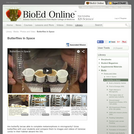
The Butterflies in Space Teacher's Guide uses "life in space" to encourage learners to conduct their own open-ended scientific investigations. The guide provides information about the Butterflies in Space experiment conducted aboard the International Space Station and instructions on how to build a habitat and conduct open-ended experiments. The experiment instructions begin on page 11 of the PDF. Learners can build a "Clamshell Habitat" or a "Box Habitat" to raise Painted Lady butterflies.
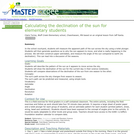
Students will observe the patterns of apparent motion of the sun using simple tools.
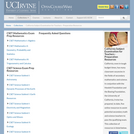
The University of California, Irvine Extension, supported by generous grants from the William and Flora Hewlett Foundation and The Boeing Company, is developing online courses to prepare science and mathematics teachers for the California Subject Examinations for Teachers (CSET).
UC Irvine Extension's online test-preparation courses correspond with the 10 CSET science subtests and three CSET mathematics subtests.

This module provides an introduction to the concept of carbohydrates as a macronutrient. The biochemical structure of simple sugars and complex carbohydrates are compared and contrasted.
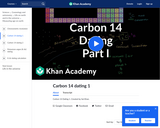
Carbon 14 Dating 1. Created by Sal Khan.
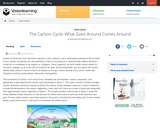
This module provides an overview of the biogeochemical carbon cycle. Major sources and sinks of carbon are discussed as well as the impact of human activities on global carbon levels.
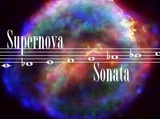
This new annotated guide (part of a series devoted to resources for enjoying or teaching astronomy) features over 250 pieces of music inspired by serious astronomy, including both classical and popular music examples. YouTube links are given for the vast majority, so you (or your students) can listen to them.
Among the pieces included is:
1) a Hubble Space Telescope cantata,
2) eight rock songs about black holes with reasonable science,
3) a supernova piano sonata,
4) a musical exploration of the Messier catalog of nebulae, clusters, and galaxies,
5) a moving song about Stephen Hawking,
6) Moon songs by the Grateful Dead, George Harrison, and the Police,
7) piano pieces “for children with small hands” named after the constellations,
8) operas about Galileo, Kepler, and Einstein,
and many more.

This OER explores the Horizon by using a Planisphere. It contains both an activity as well as resources for further exploration. It is a product of the OU Academy of the Lynx, developed in conjunction with the Galileo's World Exhibition at the University of Oklahoma.
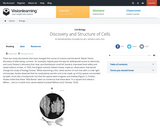
This lesson introduces the cell as the basic structural unit of life, and details modern cell theory.
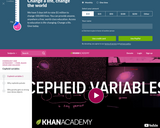
Cepheid Variables 1. Created by Sal Khan.

This activity demonstrates the spectral nature of light and the identifiable features of the visible light spectrum. Students learn the elemental spectrum, and the ROYGBIV distribution of colors in a rainbow. Students compare the spectra of various light sources, and how to identify specific elements based on their spectral signature.

This video segment adapted from NASA describes the basic characteristics of our star, the Sun.
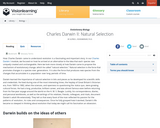
This is the second in a series of modules which detail the research of Charles Darwin and evolutionary theory. This module continues with a discussion of the processes that led to Darwin's formulation of the theory of natural selection.
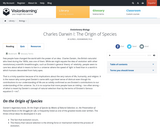
This module introduces Darwin's Galapagos travels and an introduction to the theory of evolution as a force for biological change and diversification. This is the first in a series of modules which detail the research of Charles Darwin and evolutionary theory.
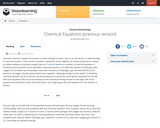
It discusses the process of equation writing and balancing chemical equations in perspective of the chemical changes that take place during a reaction. This module is the third in a series on chemical reactions.
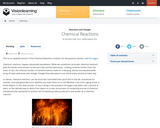
It introduces the concept of electron exchange and briefly explains exothermic and endothermic reactions. This is the first in a series of modules on chemical reactions.